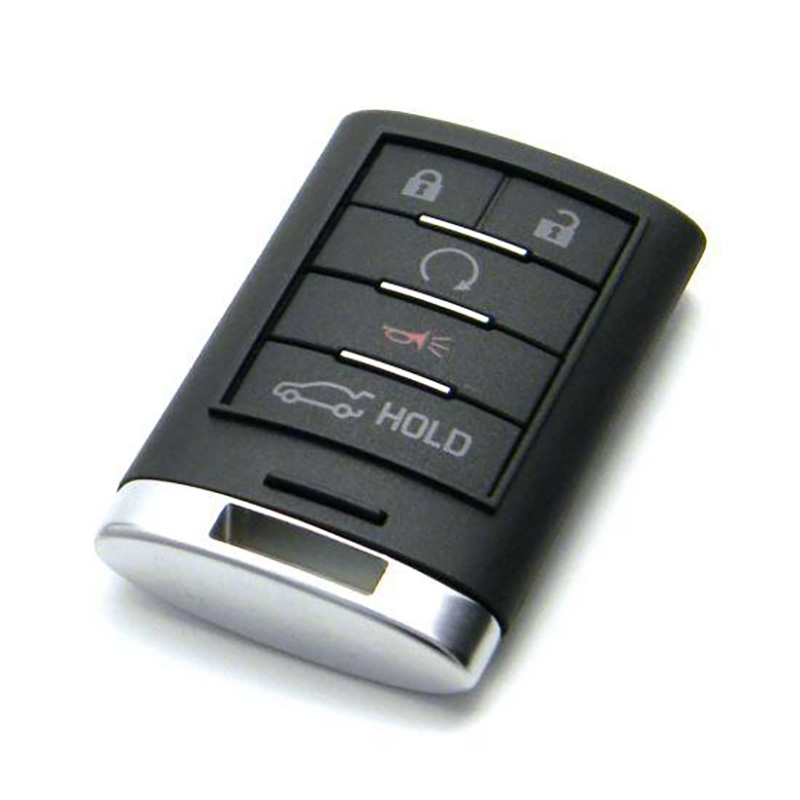Keyless entry systems, commonly enabled by key fobs, have revolutionized vehicle and home security by providing convenience and advanced features. However, these systems also pose unique security challenges. Key fob manufacturers are continuously developing and implementing strategies to address these concerns, ensuring that keyless entry systems remain secure and reliable. This article explores the various methods key fob manufacturers use to enhance the security of their products.

1. Advanced Encryption Technologies
a. Rolling Code Encryption: One of the primary methods used by key fob manufacturers is rolling code encryption, also known as hopping code. Each time the key fob is used, it generates a new, unique code that is valid for a single use only. This prevents replay attacks, where a hacker intercepts and reuses a signal to gain unauthorized access.
b. AES Encryption: Advanced Encryption Standard (AES) is another robust encryption method employed in keyless entry systems. AES encryption secures the communication between the key fob and the vehicle or home system, making it extremely difficult for hackers to decipher the transmitted data.
2. Frequency Hopping Spread Spectrum (FHSS)
Frequency Hopping Spread Spectrum is a technique that enhances security by rapidly switching the carrier frequency during transmission. This makes it challenging for hackers to intercept and jam the signal, as the frequency changes in a pattern known only to the key fob and the receiver.
3. Biometric Authentication
Some advanced key fobs incorporate biometric authentication, such as fingerprint recognition or facial recognition. This additional layer of security ensures that only the authorized user can activate the key fob, significantly reducing the risk of theft or unauthorized access.
4. Two-Factor Authentication (2FA)
To further enhance security, some manufacturers implement two-factor authentication. This approach requires the user to provide two forms of verification before gaining access. For example, in addition to pressing the key fob button, the user might need to enter a PIN or use a smartphone app to confirm their identity.
5. Signal Blocking and Shielding
a. Faraday Cages: Manufacturers recommend storing key fobs in Faraday cages or pouches when not in use. These devices block electromagnetic signals, preventing hackers from remotely accessing the key fob's signal.
b. Built-in Signal Blocking: Some key fobs come with built-in signal blocking technology that activates when the fob is stationary for a certain period. This prevents relay attacks where thieves use devices to extend the key fob's signal to unlock and start the vehicle.
6. Software Updates and Patches
Manufacturers provide regular software updates and patches to address any security vulnerabilities discovered in their keyless entry systems. These updates can be installed by the user or during routine maintenance at authorized service centers, ensuring the system remains secure against emerging threats.
7. User Education and Awareness
Educating users about the potential security risks and best practices is crucial. Manufacturers often include security guidelines in the user manual and provide resources on their websites. Tips may include advising against leaving the key fob near entry points, regularly updating passwords, and being cautious of suspicious activities.
8. Enhanced Authentication Protocols
Manufacturers implement robust authentication protocols to verify the legitimacy of the key fob before granting access. These protocols can include time-based algorithms and synchronized authentication methods that ensure the key fob and the receiver are in sync, making unauthorized access more difficult.
9. Research and Development
Continuous research and development are essential for staying ahead of potential threats. Key fob manufacturers invest in R&D to innovate and develop new security features. This proactive approach helps in anticipating future security challenges and devising solutions before they become widespread issues.
Conclusion
Key fob manufacturers employ a multi-faceted approach to address security concerns related to keyless entry systems. Through advanced encryption technologies, biometric authentication, frequency hopping, and user education, they strive to protect users from potential threats and unauthorized access. Regular software updates, the use of signal-blocking techniques, and ongoing research and development further enhance the security of keyless entry systems. As technology evolves, manufacturers must continue to innovate and adapt to ensure that key fobs remain a secure and convenient solution for modern access control needs.

 Englishen
Englishen











 No.991 Xingxiu Road,Taiwanese Investment Zone, Quanzhou, Fujian Province,P.R.China
No.991 Xingxiu Road,Taiwanese Investment Zone, Quanzhou, Fujian Province,P.R.China +86 13960286508
+86 13960286508
 3D Reality Showroom
3D Reality Showroom
